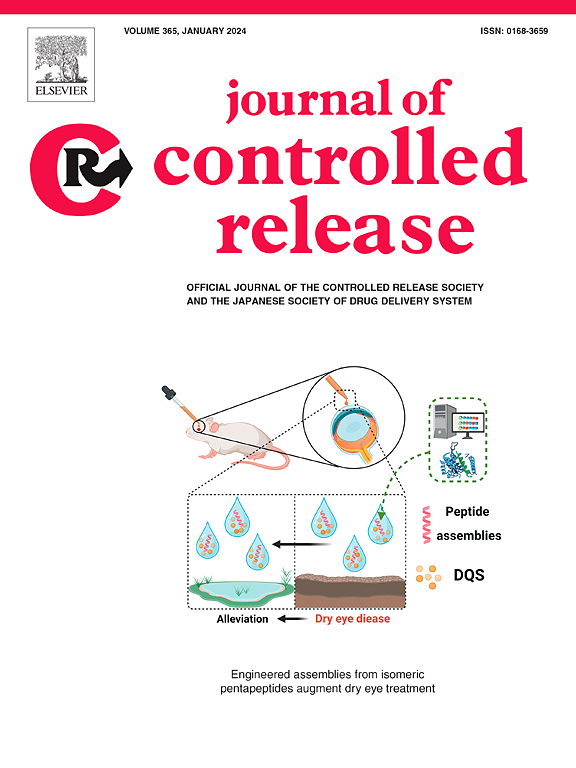Toward successful retinal drug delivery after intravitreal injection: Current strategies to overcome the inner limiting membrane
IF 10.5
1区 医学
Q1 CHEMISTRY, MULTIDISCIPLINARY
引用次数: 0
Abstract
The global prevalence of retinal disorders leading to vision impairment and blindness is rising to significant numbers and is estimated to continuously increase in the coming years. Although many groundbreaking therapies are available in the expanding field of retinal gene and cell therapy, troublesome delivery after intravitreal (IVT) injection is currently complicating their clinical translation. In this regard, the inner limiting membrane (ILM), the basement membrane located between the vitreous and the retina, is recognized as the main obstacle hindering retinal entry. Overcoming this barrier might hence advance a plethora of potent therapeutics currently available but failing to enter the retina. Aware of the importance to address this drug delivery issue, this review will discuss the current proposed methods to tackle the ILM barrier. First, we will provide an overview of ILM characteristics in health and disease after which we will reflect on the relevance of the ILM barrier role for emerging advanced therapeutic strategies. Seeing the significance of ILM removal for those therapeutics, the current proposed surgical, pharmacological and physical strategies to bypass the ILM will furthermore be highlighted to encourage the entire field of retinal drug delivery after IVT injection forward.

玻璃体内注射后成功给药:克服内限制膜的当前策略
导致视力损害和失明的视网膜疾病的全球患病率正在上升,估计在未来几年将继续增加。尽管在不断扩大的视网膜基因和细胞治疗领域有许多突破性的治疗方法,但玻璃体内注射(IVT)后的递送问题目前使它们的临床转化变得复杂。在这方面,内限制膜(ILM),位于玻璃体和视网膜之间的基底膜,被认为是阻碍视网膜进入的主要障碍。因此,克服这一障碍可能会推动大量目前可用但无法进入视网膜的有效疗法的发展。意识到解决这一药物输送问题的重要性,本综述将讨论目前提出的解决ILM屏障的方法。首先,我们将概述ILM在健康和疾病中的特征,然后我们将反思ILM屏障作用与新兴先进治疗策略的相关性。鉴于去除ILM对这些治疗方法的重要性,我们将进一步强调目前提出的绕过ILM的手术、药理学和物理策略,以促进IVT注射后视网膜给药的整个领域向前发展。
本文章由计算机程序翻译,如有差异,请以英文原文为准。
求助全文
约1分钟内获得全文
求助全文
来源期刊

Journal of Controlled Release
医学-化学综合
CiteScore
18.50
自引率
5.60%
发文量
700
审稿时长
39 days
期刊介绍:
The Journal of Controlled Release (JCR) proudly serves as the Official Journal of the Controlled Release Society and the Japan Society of Drug Delivery System.
Dedicated to the broad field of delivery science and technology, JCR publishes high-quality research articles covering drug delivery systems and all facets of formulations. This includes the physicochemical and biological properties of drugs, design and characterization of dosage forms, release mechanisms, in vivo testing, and formulation research and development across pharmaceutical, diagnostic, agricultural, environmental, cosmetic, and food industries.
Priority is given to manuscripts that contribute to the fundamental understanding of principles or demonstrate the advantages of novel technologies in terms of safety and efficacy over current clinical standards. JCR strives to be a leading platform for advancements in delivery science and technology.
 求助内容:
求助内容: 应助结果提醒方式:
应助结果提醒方式:


